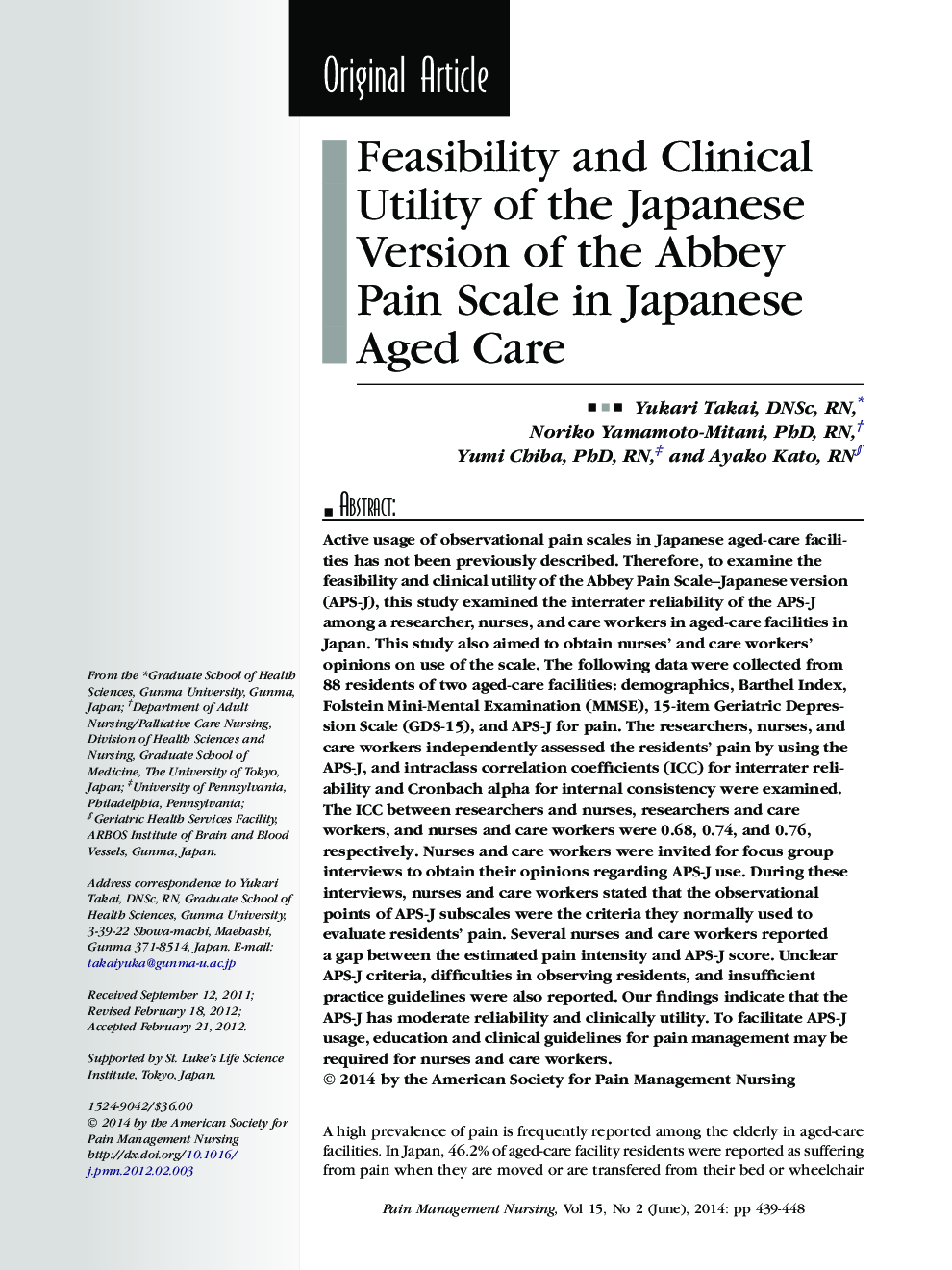| Article ID | Journal | Published Year | Pages | File Type |
|---|---|---|---|---|
| 2678021 | Pain Management Nursing | 2014 | 10 Pages |
Active usage of observational pain scales in Japanese aged-care facilities has not been previously described. Therefore, to examine the feasibility and clinical utility of the Abbey Pain Scale–Japanese version (APS-J), this study examined the interrater reliability of the APS-J among a researcher, nurses, and care workers in aged-care facilities in Japan. This study also aimed to obtain nurses’ and care workers’ opinions on use of the scale. The following data were collected from 88 residents of two aged-care facilities: demographics, Barthel Index, Folstein Mini-Mental Examination (MMSE), 15-item Geriatric Depression Scale (GDS-15), and APS-J for pain. The researchers, nurses, and care workers independently assessed the residents’ pain by using the APS-J, and intraclass correlation coefficients (ICC) for interrater reliability and Cronbach alpha for internal consistency were examined. The ICC between researchers and nurses, researchers and care workers, and nurses and care workers were 0.68, 0.74, and 0.76, respectively. Nurses and care workers were invited for focus group interviews to obtain their opinions regarding APS-J use. During these interviews, nurses and care workers stated that the observational points of APS-J subscales were the criteria they normally used to evaluate residents’ pain. Several nurses and care workers reported a gap between the estimated pain intensity and APS-J score. Unclear APS-J criteria, difficulties in observing residents, and insufficient practice guidelines were also reported. Our findings indicate that the APS-J has moderate reliability and clinically utility. To facilitate APS-J usage, education and clinical guidelines for pain management may be required for nurses and care workers.
